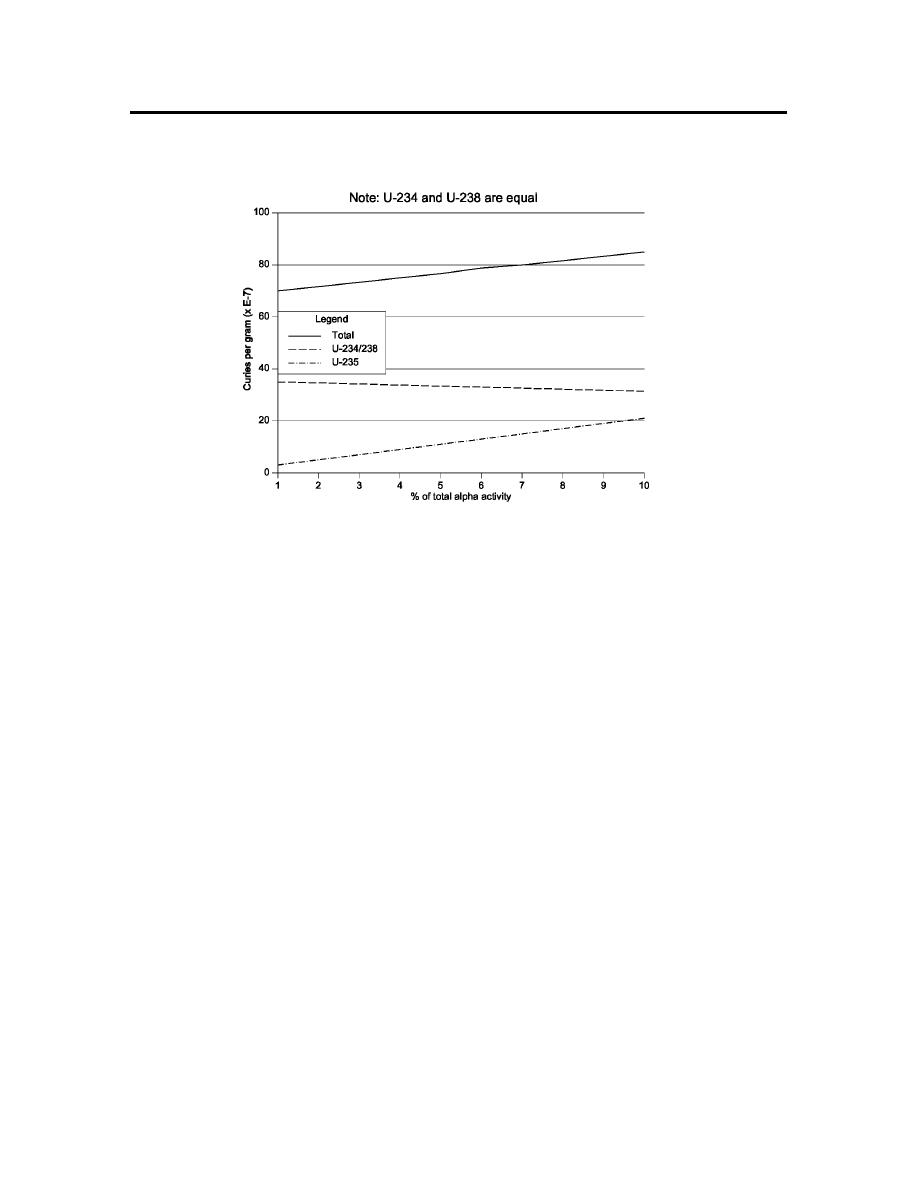 |
|||
|
|
|||
|
Page Title:
Figure 2-4. Estimated Uranium Specific Activity for Laser Enrichment (of natural uranium) |
|
||
| ||||||||||
|
|  DOE-STD-1136-2004
Guide of Good Practices for Occupational Radiation Protection in Uranium Facilities
Figure 2-4. Estimated Uranium Specific Activity for Laser Enrichment (of natural uranium)
The Derived Air Concentration (DAC) values for several radionuclides are shown in Table 2-6.
Because the ALIs for the three primary uranium isotopes are expressed in activity units, enrichment
has little impact on inhalation and ingestion ALIs. However, as illustrated in Table 2-5, as enrichment
increases from 2% to 20%, the specific activity increases nine-fold. Consequently, the mass of
material that corresponds to one ALI decreases by a factor of nine. The degree of enrichment also
affects the controls that are required for external penetrating radiation exposure because of the increase
in the amount of gamma-emitting 235U that is present.
As a historical note, some of the earlier documentation refers to the "special curie" of natural uranium,
which was defined as 3.7 x 1010 d/s of 234U, 3.7 x 1010 d/s of 235U, and 1.7 x 109 d/s of 235U. Thus, 1
"curie" of natural uranium was actually slightly more than 2 curies of uranium alpha activity. This
essentially obsolete term has caused considerable confusion. Readers are cautioned to be aware of the
use of this special curie in the older literature. Use of this unit in any current application is strongly
discouraged.
2.1.4 Contaminants from Recycled Uranium and Associated Hazards
Some of the uranium feed material that was handled at DOE facilities had been reclaimed or
recycled from reprocessed, spent reactor fuel. The chemical processes by which recycled uranium was
purified left trace amounts of transuranic elements (neptunium, americium, and plutonium) and fission
found in nature, such as 236U. At the minute concentration levels in uranium from fuel reprocessing
facilities, the radiological impact of these impurities was negligible in most cases. However, there
were many routine chemical processes that tended to concentrate these impurities, either in the
uranium product or in reaction by-products, such that radiological controls and environmental
monitoring programs must consider these impurities.
2-11
|
|
Privacy Statement - Press Release - Copyright Information. - Contact Us |